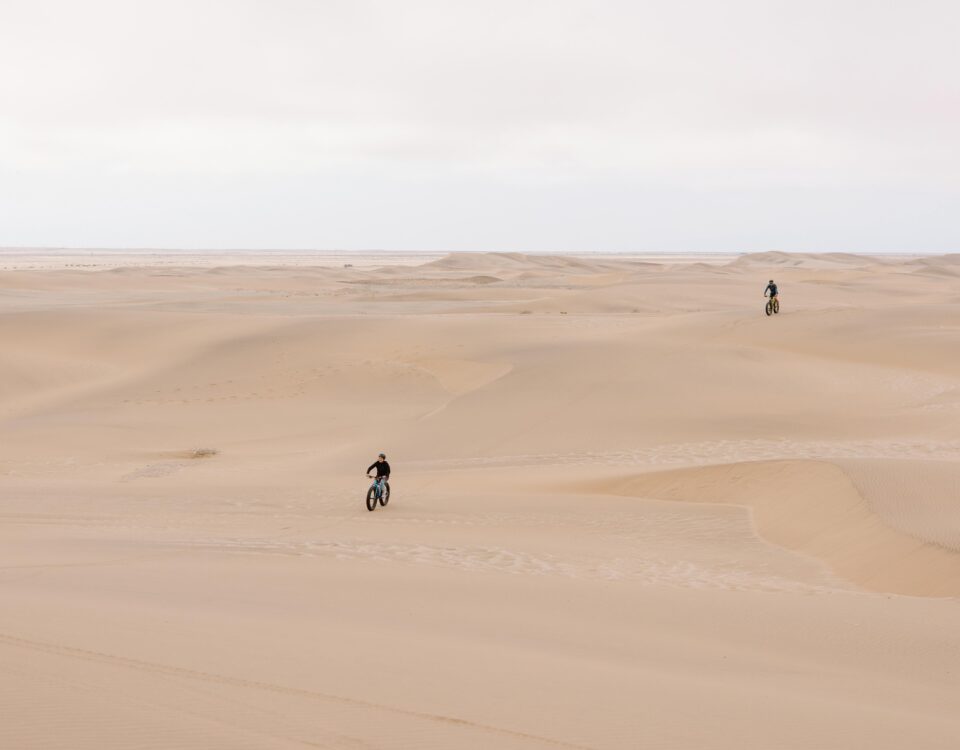Kids find famous insect at Fish River Canyon Namibia
August 23, 2012Birding in Namibia – a rest before Etosha
August 23, 2012Bleeding fingers, ice plants, window plants, flowering stones
by Amy Schoeman
Referred to collectively as veld vygies and informally as ‘mesems’ by botanists and ‘planties’, at certain times of the year this large family of small, succulents provides bright patches of brilliant colour in the dry, western regions of Southern Africa.
The name Mesembryanthemum was first coined by Jacob Breyne in 1689 to convey the meaning ‘noon-flowering’ from the Greek word mesembria meaning midday. The mesems were subsequently split into many different genera (over 120), a quarter of which have only one species.
Many mesems grow on Namibia’s coastal gravel plains, such as Mesembryanthemum cryptanthum, descriptively called ‘bleeding fingers’.
Typical of vegetation that appears shortly after a rain shower, it grows in vivid patches of green, yellow and orange, sprawling in all directions.
When squeezed, its fat swollen finger-like leaves seem to consist mainly of water, with very little fibre. The ice plant, M. guerichianum, tends to grow in brackish soil. It has large, distinctively fleshy leaves with crystal-like water-filled cells. After germination the young leaves are often red, gradually turning green as the plant matures.
A very common coastal genus is Psilocaulon, the name meaning ‘bare stem’. Over 70 species occur from north of the Kunene River in Angola southwards down the Namibian coast to the northern, western and eastern Cape Province in South Africa. Their stems are nearly always jointed, the nodes sometimes constricted, giving them a beaded appearance. Also common in the desert regions is Sesuvium sesuvioides, recognised by its small, mauvish-purple star-shaped flower. It grows in the most unlikely places – in crevices on barren granite rocks and on otherwise forsaken plains.
A fascinating dwarf mesem found in the Lüderitz environs and along the coastal desert to just south of the Orange River, is the monotype yellow-flowered Fenestraria aurantiaca. As its name suggests, it is a true window plant in that the tips of the leaves are transparent, allowing sunlight to enter and disperse nutrients to the chloroplasts on the inside walls of the club-shaped leaves.
The best-known mesems are undoubtedly the lithops species, referred to as ‘stone plants’ or ‘flowering stones’, the genus name Lithops being derived from the Greek word lithos, meaning stone.
This intriguing plant so such resembles the stones amongst which it grows, that finding it is quite a challenge, as the leaves generally take on the colour of the stones. To some extent this very effective camouflage protects them, but they are nevertheless much sought after by collectors, which accounts for their relative scarceness in more accessible areas.
Fortunately the majority of Namibia’s lithops species occur in areas not readily accessible, such as the restricted diamond areas of the south. All species, the plants as well as the seeds, are protected.
This article appeared in the Dec ‘05/Jan ‘06 edition of Travel News Namibia.
Illustrations sourced from http://www.plantillustrations.org



